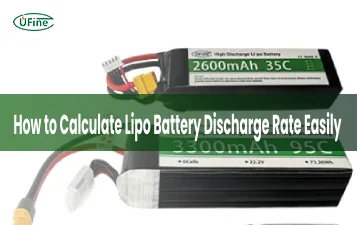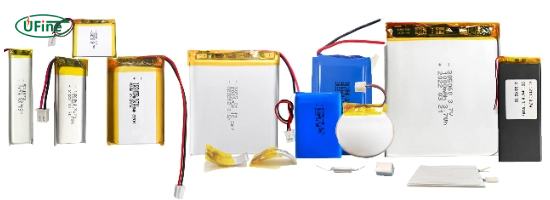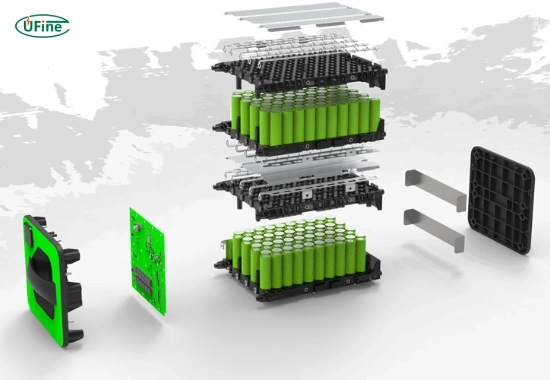A ternary lithium battery is a type of lithium-ion battery that uses three key metal elements—nickel (Ni), cobalt (Co), manganese (Mn), or aluminum (Al)—in its cathode material. Due to their high energy density and good overall performance, these batteries are widely used in electric vehicles (EVs), energy storage systems, and consumer electronics.
However, not all ternary lithium batteries are the same. One of the most critical factors differentiating them is their cathode’s nickel content. Based on this, ternary lithium batteries can be classified into high-nickel and low-nickel.
- High-nickel ternary lithium batteries (e.g., NCM811) offer higher energy density and better efficiency but have safety concerns and a shorter lifespan.
- Low-nickel ternary lithium batteries (e.g., NCM523) are more stable, safer, and last longer but have lower energy density.
So, how do these differences impact performance, cost, and safety? Let’s explore everything you need to know about high-nickel vs. low-nickel ternary lithium batteries.
Part 1. What are ternary lithium batteries?
A ternary lithium battery is a lithium-ion battery that uses a cathode material composed of three key metals:
- Nickel (Ni): Increases energy density and improves battery performance.
- Cobalt (Co): Enhances battery stability and prevents overheating.
- Manganese (Mn) or Aluminum (Al): Improves thermal stability and extends battery lifespan.
These batteries are commonly used in electric vehicles (EVs), energy storage systems, and power tools due to their balance between energy density, lifespan, and safety.
Part 2. What is a high-nickel ternary lithium battery?
A high-nickel ternary lithium battery has a nickel content of above 60%, with popular types including:
- NCM811 (80% nickel, 10% cobalt, 10% manganese)
- NCMA (Nickel-Cobalt-Manganese-Aluminum, with over 70% nickel content)
Key advantages of high-nickel ternary lithium batteries:
- ✅ Higher energy density: Can store more power in a smaller size.
- ✅ Lower cobalt content: Reduces dependency on expensive and scarce cobalt.
- ✅ Better efficiency: Ideal for high-performance applications like long-range EVs.
Challenges of high-nickel ternary lithium batteries:
- ❌ Shorter lifespan: Faster capacity degradation over time.
- ❌ Lower thermal stability: Higher risk of overheating and thermal runaway.
- ❌ Higher cost: More expensive due to advanced manufacturing and safety measures.
These batteries are widely used in high-performance electric vehicles where more extended range and better efficiency are key requirements.
Part 3. What is a low-nickel ternary lithium battery?
A low-nickel ternary lithium battery has a nickel content below 50%, with common types including:
- NCM523 (50% nickel, 20% cobalt, 30% manganese)
- NCM622 (60% nickel, 20% cobalt, 20% manganese)
Key advantages of low-nickel ternary lithium batteries:
- ✅ More stable and safer: Lower risk of overheating and battery fires.
- ✅ Longer lifespan: Can handle more charge cycles before degradation.
- ✅ Lower cost: More affordable due to simpler manufacturing and fewer safety concerns.
Challenges of low-nickel ternary lithium batteries:
- ❌ Lower energy density: Provides less power per unit weight than high-nickel batteries.
- ❌ Higher cobalt content: More reliance on cobalt is expensive and has ethical concerns.
- ❌ Heavier battery weight: May increase the overall weight of EVs or devices.
These batteries are commonly used in hybrid vehicles, energy storage systems, and budget-friendly EVs.
Part 4. What are the main differences between high-nickel and low-nickel ternary lithium batteries?
The most significant differences between high-nickel and low-nickel ternary lithium batteries lie in their energy density, lifespan, safety, and cost.
- Energy Density:
- High-nickel batteries have an energy density of 250-300 Wh/kg, making them ideal for long-range EVs.
- Low-nickel batteries have an energy density of 150-200 Wh/kg, which is lower but sufficient for many applications.
- Safety & Stability:
- High-nickel batteries are more prone to thermal runaway, meaning they can overheat and catch fire if not properly managed.
- Low-nickel batteries have better thermal stability, making them safer for long-term use.
- Lifespan & Durability:
- High-nickel batteries degrade faster, typically lasting 1,500–2,000 charge cycles.
- Low-nickel batteries last longer, averaging 2,500–3,500 charge cycles.
- Cost:
- High-nickel batteries are more expensive due to their advanced manufacturing process.
- Low-nickel batteries are cheaper and more cost-effective for budget-conscious consumers.
- Application Scenarios:
- High-nickel batteries are preferred for high-performance EVs, premium smartphones, and aerospace applications.
- Low-nickel batteries are commonly used in hybrid cars, energy storage systems, and lower-cost EV models.
Here’s a summary in table format:
| Feature | High-Nickel Battery | Low-Nickel Battery |
|---|---|---|
| Nickel Content | Above 60% | Below 50% |
| Energy Density | 250-300 Wh/kg | 150-200 Wh/kg |
| Safety | Lower; risk of overheating | Higher; more stable |
| Lifespan | 1,500–2,000 charge cycles | 2,500–3,500 charge cycles |
| Cost | More expensive | More affordable |
| Application | High-performance EVs, premium electronics | Hybrid cars, energy storage |
Part 5. Which ternary lithium battery is safer?
Between the two, low-nickel ternary lithium batteries are safer because they have better thermal stability and lower risk of overheating.
High-nickel batteries require advanced cooling and battery management systems (BMS) to ensure safe operation. In contrast, low-nickel batteries can handle higher temperatures without significant safety risks.
Low-nickel batteries are a better choice for applications where safety is the top priority.
Part 6. Which ternary lithium battery lasts longer?
Low-nickel batteries last longer because they experience less structural degradation during charge and discharge cycles.
- High-nickel batteries: 1,500–2,000 charge cycles
- Low-nickel batteries: 2,500–3,500 charge cycles
If you need a battery with better longevity, a low-nickel ternary lithium battery is the better option.
Part 7. FAQs about ternary lithium battery
Which ternary lithium battery is best for electric vehicles?
High-nickel batteries are preferred for long-range and high-performance EVs. Low-nickel batteries are a better choice for affordable and hybrid EVs.
Are high-nickel batteries dangerous?
They have a higher risk of overheating, but modern battery management systems (BMS) help improve safety.
Why do premium EV manufacturers use high-nickel batteries?
High-nickel batteries provide higher energy density, allowing EVs to travel longer distances per charge.
Are low-nickel batteries cheaper?
They are more affordable due to their more straightforward production process and better stability.
Can ternary lithium batteries be recycled?
Yes, but the recycling process is still developing. Recovering valuable metals like nickel and cobalt is a key focus for sustainable battery production.
Related Tags:
More Articles

LiPo Battery Discharge Rate Guide & Calculation Tips
Understand LiPo battery discharge rates, C-ratings, and how to calculate max current. Essential guide for RC, drones, and electronics users.
High‑Capacity 3S LiPo Batteries: 5000 mAh vs. 10000 mAh
Compare 3S LiPo 5000mAh vs 10000mAh batteries by weight, power, and use. Find the best fit for your drone, RC car, or boat setup.
Top 5 Applications for Small 3S LiPo Batteries
Small 3S LiPo batteries power drones, RC gear, wearables, and robotics with high energy and low weight. Making them ideal for compact electronics projects.
Building and Charging Your Own 3S LiPo Pack: A Step‑by‑Step Guide
Learn how to build, balance, and charge a 3S LiPo battery pack safely at home with this complete DIY guide for hobbyists and beginners.
How to Choose the Right LiPo Battery Plug Type?
Discover the best LiPo battery plug types, how to choose them, and expert tips for safe usage, soldering, and maintenance.





